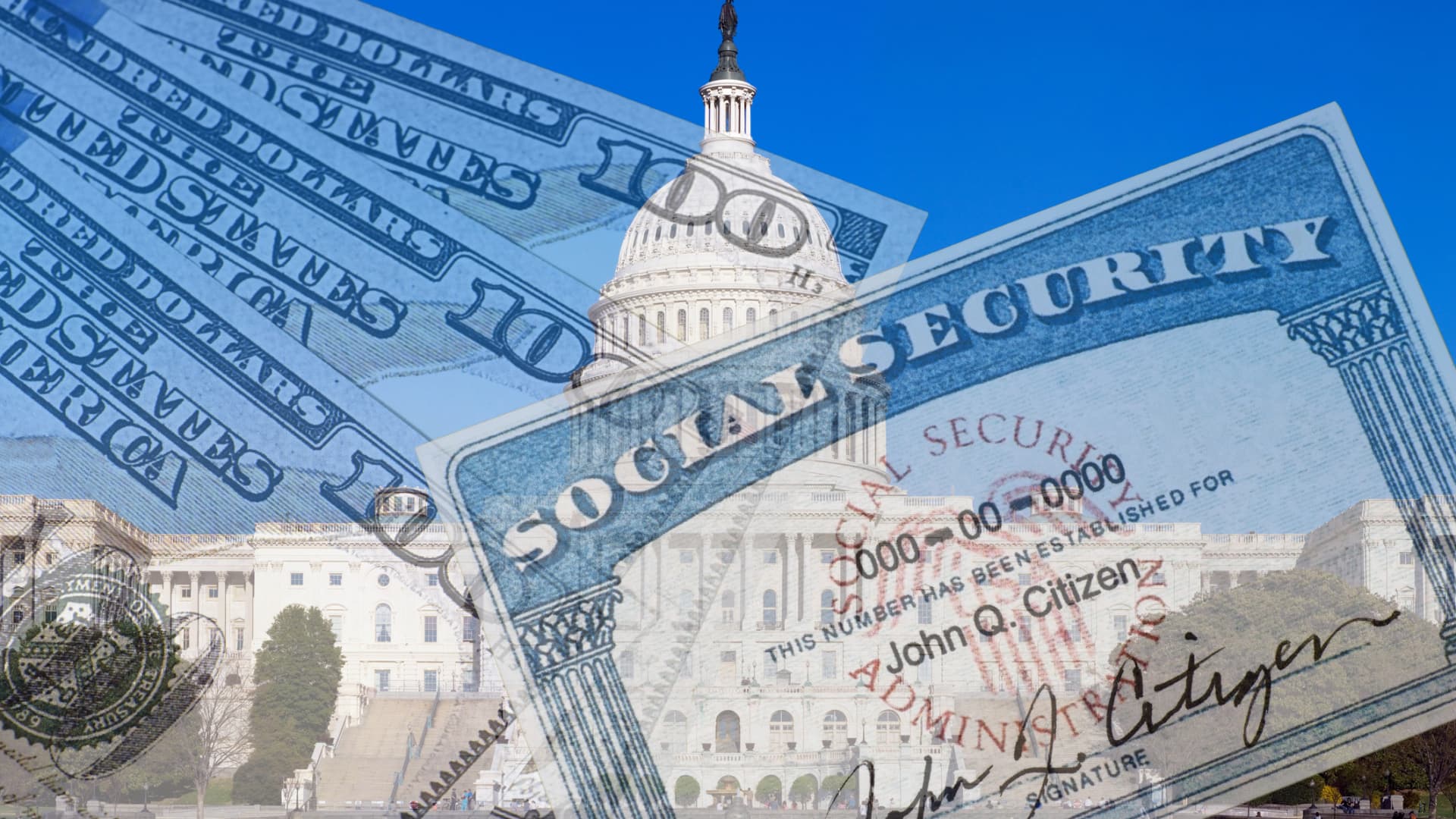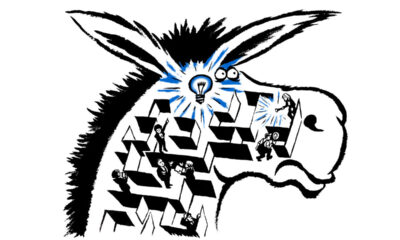Richard Stephen | Istock | Getty Images
When President Joe Biden signed the Social Security Fairness Act on Jan. 5, it was a victory for those who tirelessly lobbied for years for new changes that will provide more generous benefits to public workers with pensions.
Yet for the policy community, the enacted change backed by overwhelming bipartisan support in both the House and Senate is a huge disappointment.
“Literally, you cannot find a Social Security expert who thought Social Security Fairness Act was a good idea,” said Andrew Biggs, senior fellow at the American Enterprise Institute.
The new law eliminates two provisions that adjusted Social Security benefits for individuals who also receive pension income from work performed in the public sector where payroll taxes to Social Security were not paid.
The now defunct Windfall Elimination Provision, or WEP, reduced Social Security benefits for approximately 2 million individuals who also have pension or disability benefits from work where they did not contribute to Social Security. The WEP was enacted in 1983.
The Government Pension Offset, or GPO, reduced Social Security benefits for nearly 750,000 spouses, widows and widowers who receive their own pensions from work in the public sector. The GPO was created in 1977.
More from Personal Finance:
Maximize your 401(k) plan in 2025 with higher limits and catch-up contributions
Here are changes retirees will see from Social Security and Medicare in 2025
Biden withdrew student loan forgiveness plans. There is still debt relief available
The provisions were intended to help ensure all Social Security beneficiaries get a comparable payout from the program. Because Social Security is progressive and intended to be an anti-poverty program, low-income workers receive a higher income replacement rate when they collect benefits. The WEP and GPO were intended to adjust public workers’ benefits so they were not treated as low-income workers.
Once the bill was signed, organizations that lobbied for the change praised the new law for finally providing affected workers the full Social Security benefits they had earned. For the National Committee to Preserve Social Security and Medicare, the new law caps off a decades-long fight to either modify or repeal the rules.
“It’s a way of cutting benefits for a class of people who are providing a public service for our communities,” said Maria Freese, senior legislative representative at the National Committee to Preserve Social Security and Medicare.
“They got singled out, and their Social Security earns them less in benefits than a person who decided not to go into public service,” Freese said.
As the new law is phased in, Social Security beneficiaries may see monthly benefit increases ranging from an average of $360 to $1,190, the Congressional Budget Office has estimated. Affected beneficiaries will also get lump-sum payments for the extra benefits they would have received throughout 2024.
The law makes the program “more fair” now that people will no longer be penalized for income earned outside of the system, said John Hatton, staff vice president for policy and programs at the National Active and Retired Federal Employees Association, or NARFE.
Notably, income from capital gains or inheritances already did not influence the size of Social Security benefits. The same should be true for income earned outside of the program, Hatton said.
Yet many policy experts maintain the changes never should have been enacted.
“What we saw was a huge special interest push for a very poorly developed and poorly targeted policy which is creating windfalls for a number of recipients,” said Maya MacGuineas, president of the bipartisan Committee for a Responsible Federal Budget.
Notably, that change will cost almost $200 billion over 10 years, according to the CBO, at a time when Social Security’s trust funds are already running low. The program’s combined trust funds are expected to last until 2035, at which point 83% of benefits will be payable, Social Security’s trustees projected last year. Eliminating the WEP and GPO will bring move that depletion date six months closer.
Experts both for and against the Social Security Fairness Act agree Congress needs to address the program’s funding shortfall sooner rather than later.
Provisions aimed to prevent benefit windfalls
The WEP and GPO rules, and how their intricacies affect individual beneficiaries, are complex.
“There is an injustice here that the provisions tried to correct, maybe not perfectly,” said Alicia Munnell, senior advisor at the Center for Retirement Research at Boston College.
Despite experts’ tireless efforts to explain the provisions to lawmakers, “we all failed,” Munnell said. Now what’s left is “bad policy,” she said.
Put simply, without the WEP, state and local workers who only work in jobs that pay into Social Security for a short time look like low earners and consequently get the extra benefits aimed at low earners, she said.
The elimination of the GPO also now makes it so a nonworking spousal Social Security benefit goes to a full-time worker with their own pension benefit, noted Charles Blahous, senior research strategist at George Mason University’s Mercatus Center.
“There’s zero justification for doing that,” said Blahous, who called the legislation “unserious” and “disappointing.”
While the WEP and GPO were imperfect, they were needed to prevent the payment of benefit windfalls to a small number of people who didn’t pay Social Security taxes for years, he said.
“It’s a very concerning indicator of Social Security’s future,” Blahous said.
Lawmakers face Social Security solvency dilemma
The Social Security Fairness Act was passed by the Senate with a 76-vote bipartisan majority. Amendments that were introduced in those final legislative hours in December — including efforts to add ways to pay for the change or alter the provisions instead of replacing them — failed. The Senate took up the bill after the House passed it in November with a 327 bipartisan majority.
Now that the WEP and GPO elimination has become law, one way to make the changes more equitable would be bring the 25% of state and local workers who do not currently contribute to Social Security into the program, according to Munnell.
While Congress could revisit the changes it just made with the Social Security Fairness Act, experts say that’s unlikely.
The bigger problem lawmakers now face is when and how to restore the program’s solvency.
“We are still in a place where politically it’s very difficult for members of Congress to come out in support of any substantive, responsible changes to the program that will address its long-term fiscal issues,” said Emerson Sprick, associate director of economic policy at the Bipartisan Policy Center.
Future action will require presidential leadership and a commitment to address the issue, Sprick said.
However, for now, President-elect Donald Trump has promised not to touch Social Security. Trump has also said he wants to eliminate taxes on Social Security benefit income. Trump’s presidential transition team did not immediately respond to a request for comment.
Because that change would be expensive, over $100 billion a year, and does not have the same fairness argument to it, it would be less likely to go through, according to Biggs.
While Trump has promised no benefit cuts, that creates a mathematical problem for Republicans, who are typically a low-tax party, he said.
Ultimately, restoring Social Security’s solvency may require benefit cuts, tax increases or a combination of both.
“We know that we need to be addressing Social Security and Medicare because of the insolvency that they both face within roughly a decade,” MacGuineas said. “Neither party, no leader, seems to have the political will or the integrity to start talking about how to get that done.”


 Economics1 week ago
Economics1 week ago
 Economics1 week ago
Economics1 week ago
 Personal Finance1 week ago
Personal Finance1 week ago
 Blog Post7 days ago
Blog Post7 days ago
 Personal Finance1 week ago
Personal Finance1 week ago
 Economics1 week ago
Economics1 week ago
 Economics6 days ago
Economics6 days ago
 Economics7 days ago
Economics7 days ago










